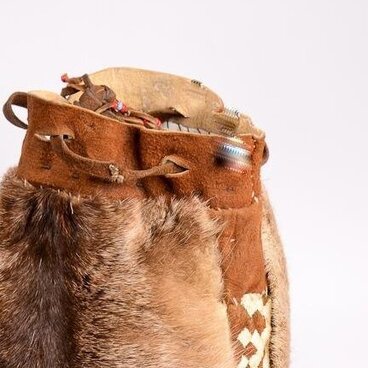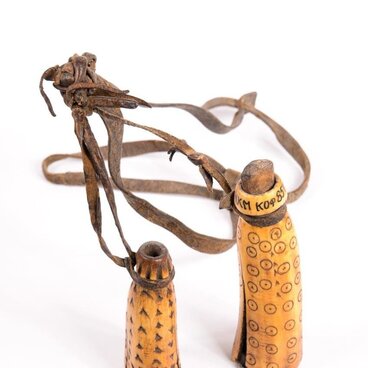The history of ceramics goes back tens of millennia. It is considered the first material created by humankind. The emergence and spread of ceramic vessels are directly associated with the transition of people to a sedentary lifestyle. Researchers suggest that the first vessels were used for domestic purposes e.g. for storing and preparing food. Later, ceramic products began to be used in ceremonial and cult rituals.
The advantage of ceramics is durability. For the archaeological sites of North-West Siberia, it is ceramic vessels that are the main evidence of ancient times, since they have been better preserved than items made from other materials. By the technology of making the vessel, its shape, and ornamentation, researchers determine the type of ceramics that was characteristic of a particular archaeological culture. On the territory of the Nefteyugansk District, a lot of ceramics of the Kulay people have been preserved. The Kulay culture is a layer of finds that dates back to around the 4th century BC — 4th century AD.
The Museum of the Ob River houses restored Kulay ceramic vessels. These ceramics have a distinguishing ornament in the form of complex designs — checkmarks, zigzags, and snakes. It is quite possible that the fishermen of the Salym District reflected the natural world that surrounded them in this way: floodplain landscapes, waterfowl, and snakes. The patterns were applied with stamps that were pectinate, smooth, in the form of a duck or a corner.
Kulay vessels are almost always pot-shaped, with the upper part slightly bent outward. The exhibits displayed in the Museum were discovered during excavations of the settlement of Syroy Agan 6, which is located in the Nefteyugansk District. One of the exhibits has a wide leg — a pallet. Such items were an imitation of oriental copper vessels, which were widespread during the times of Kulay culture. The craftsmen of those times made not only footed vessels, but also pots, jugs, and at the later stages of the Kulay culture — elongated vessels. As a rule, they did not use pure clay, but mixed it with refractory kaolin, sometimes with limonite and ocher particles.
The advantage of ceramics is durability. For the archaeological sites of North-West Siberia, it is ceramic vessels that are the main evidence of ancient times, since they have been better preserved than items made from other materials. By the technology of making the vessel, its shape, and ornamentation, researchers determine the type of ceramics that was characteristic of a particular archaeological culture. On the territory of the Nefteyugansk District, a lot of ceramics of the Kulay people have been preserved. The Kulay culture is a layer of finds that dates back to around the 4th century BC — 4th century AD.
The Museum of the Ob River houses restored Kulay ceramic vessels. These ceramics have a distinguishing ornament in the form of complex designs — checkmarks, zigzags, and snakes. It is quite possible that the fishermen of the Salym District reflected the natural world that surrounded them in this way: floodplain landscapes, waterfowl, and snakes. The patterns were applied with stamps that were pectinate, smooth, in the form of a duck or a corner.
Kulay vessels are almost always pot-shaped, with the upper part slightly bent outward. The exhibits displayed in the Museum were discovered during excavations of the settlement of Syroy Agan 6, which is located in the Nefteyugansk District. One of the exhibits has a wide leg — a pallet. Such items were an imitation of oriental copper vessels, which were widespread during the times of Kulay culture. The craftsmen of those times made not only footed vessels, but also pots, jugs, and at the later stages of the Kulay culture — elongated vessels. As a rule, they did not use pure clay, but mixed it with refractory kaolin, sometimes with limonite and ocher particles.



